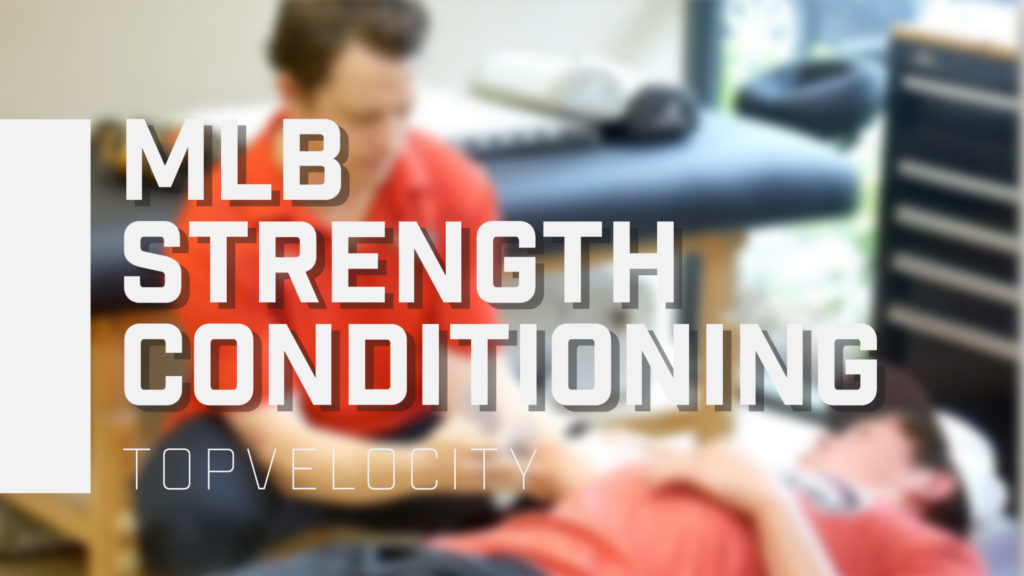
In this discussion, I will be looking at the strength and conditioning programmed in the MLB. Before analyzing their model of programming for strength and conditioning I would first like to breakdown their general evaluation models across the league. Evidence suggests MLB strength and conditioning coaches test fewer parameters and take fewer tests than other leagues like the NHL and the NFL (Ebben, & Blackard, 2001; Ebben, Carroll, & Simenz, 2004). It was shocking to learn that in 2005 only seven MLB strength and conditioning coaches admitted they test for strength or power. This is a stark contrast to the NHL which was 100% of their coaches who were testing for strength and 82.6% were tested for power. This is upsetting for the MLB but not shocking because the conventional wisdom for years was that throwing velocity wasn’t connected to strength or power which evidence suggests otherwise (Jones, Bishop, Hunter, & Fleisig, 2001; Lachowetz, Evon, & Pastiglione, 1998). Evidence also suggests it is associated with a reduction in pain and has been recommended for testing baseball players (Hayes, Hamer, Grove, & Elliott, 2001; Gambetta, 1997).
Looking at speed, agility and quickness testing only one coach in the MLB reported testing for acceleration, four admitted testing for speed and seven tested for agility. This is very interesting due to the fact that all of the coaches in the MLB use some type of speed development programming to train the athletes. Evidence also suggests some type of speed, agility, and quickness testing for baseball players (Watkinson, 1998). Continuing with how the MLB programs strength and conditioning with their athletes, let’s look at flexibility training. It shouldn’t come as a shock that all of the MLB strength and conditioning coaches program some type of static stretching, dynamic stretching, or PNF stretching protocol for their athletes. The NHL and the NFL have around 85% of their strength and conditioning coaches programming some types of flexibility training of their athletes.
The frequency of programming for the MLB was four days a week in the off-season and two days a week for the in-season. When it came to lifting weights and the types of weight training mythology only three out of twenty-one MLB strength and conditioning coaches interviewed used Olympic-style weight training for their athletes. This is in stark contrast to the 91% of the NHL and 85% of Division I coaches who have admitted to using Olympic-style weight training with their athletes. This is shocking to learn when evidence suggests that Olympic lifting is one of the most effective forms of training to enhance dynamic athletic performance like jump, running, and throwing (Kawamori, & Haff, 2004). It was positive to note that the most important exercises listed by MLB strength and conditioning coaches were variations of squats. Also, most MLB strength and conditioning coaches admitted that they use some type of periodization for their programming which was similar to the NFL and the NHL.
I believe the MLB is behind when it comes to implementing the advancements in exercise science today from all the evidence-based research that has exponentially grown over the beginning of this century. I would like to see more assimilation of this evidence into the league and all of baseball. Unfortunately, due to the high probability of injury in the sport of baseball, the conventional wisdom of the game is backward due to the lack of education and I believe this lack of education is linked to the high injury rates. At this point in the game, we are just now coming into an era of being able to balance the science with the art, but it still hasn’t reached a critical mass of scientific information for the game to establish an equilibrium.
MLB Strength and Conditioning Reference
Durell, D. L., Pujol, T. J., & Barnes, J. T. (2003). A survey of the scientific data and training methods utilized by collegiate strength and conditioning coaches. Journal of Strength and Conditioning Research, 17(2), 368-373.
Ebben, W. P., & Blackard, D. O. (2001). Strength and conditioning practices of National Football League strength and conditioning coaches. Journal of Strength and Conditioning Research, 15(1), 48-58.
Ebben, W. P., Carroll, R. M., & Simenz, C. J. (2004). Strength and conditioning practices of National Hockey League strength and conditioning coaches. The Journal of Strength & Conditioning Research, 18(4), 889-897.
Gambetta, V. (1997). Concepts of baseball conditioning: The White Sox experience. Strength & Conditioning Journal, 19(4), 7-9.
Hayes, R., Hamer, P., Grove, B., & Elliott, B. (2001). Effects of strength training on shoulder pain and perceived health of the throwing arm in baseball pitchers. In Applied Research in Coaching and Athletics Annual (pp. 178-191). American Press.
Jones, K., Bishop, P. H. I. L. L. I. P., Hunter, G. A. R. Y., & Fleisig, G. L. E. N. N. (2001). The effects of varying resistance-training loads on intermediate-and high-velocity-specific adaptations. Journal of strength and conditioning research, 15(3), 349-356.
Kawamori, N., & Haff, G. G. (2004). The optimal training load for the development of muscular power. The Journal of Strength & Conditioning Research, 18(3), 675-684.
Lachowetz, T., Evon, J., & Pastiglione, J. (1998). The effect of an upper body strength program on intercollegiate baseball throwing velocity. The Journal of Strength & Conditioning Research, 12(2), 116-119.
Watkinson, J. (1998). Performance testing for baseball. Strength & Conditioning Journal, 20(4), 16-20.

